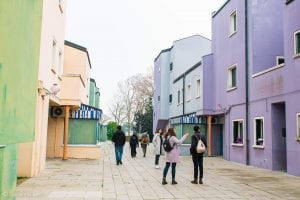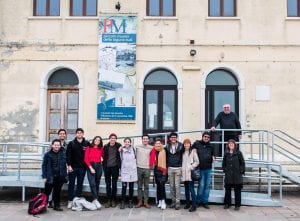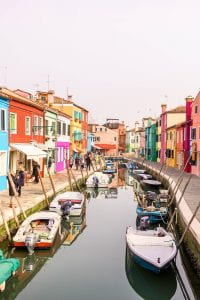Blogger: Robert Sanchez
Photos courtesy of Savanna Lim
With just a little over a month into the program, Cornell in Rome has done a great job of balancing in-class work with engaging learning opportunities out in the field. Having recently returned to Rome from a week long field trip around Central and Northern Italy, there were many exciting site visits to reflect on.
One of my favorite stops was the two days we spent in Venice. Although I’m in the Foundations in Architecture program, I tagged along with the Urban Planners to learn more about sea level rise and the adaptation/mitigation strategies being used in Venice.
On Monday we made our way along the Venetian coast on Via Alberoni until our bus reached the end of Lido di Venezia. Before I knew it, our bus had driven onto a ferry and we were sailing across Laguna Veneta before docking in Santa Maria De Mare on Lido-Pellestrina. I had never experienced a hybrid form of public transportation quite like this, but with the archipelagic nature of Venice, the creativity of the public transportation works well and definitely made for a memorable experience.
We continued on foot and made our way to Piccolo Museo della laguna sud, a museum dedicated to the history of sea level rise and the local fisheries of Venice, which was constructed by and is currently run entirely by volunteers. Being especially interested in climate change adaptation from an urban planning perspective, the opportunity to learn about the flood that hit the island of Pellestrina back in 1966 and how the city of Venice dealt with it thereafter was incredibly enriching.
On Tuesday we set out for Burano Island. While we were there, we learned about the affordable housing practices implemented as a method for stabilizing the population of this enchantingly colorful Venetian Island. Our final stop was to the Consorzio Venezia Nuova, a consortium of Italian construction and engineering firms. We learned about the MOSE intervention plans that are intended to safeguard the Venice Lagoon through the construction of sea walls that are to shield up to 3 meters of water and protect against future flooding, a project that is set to be completed by the end of 2021.
Here’s some photographs highlighting our trip!



